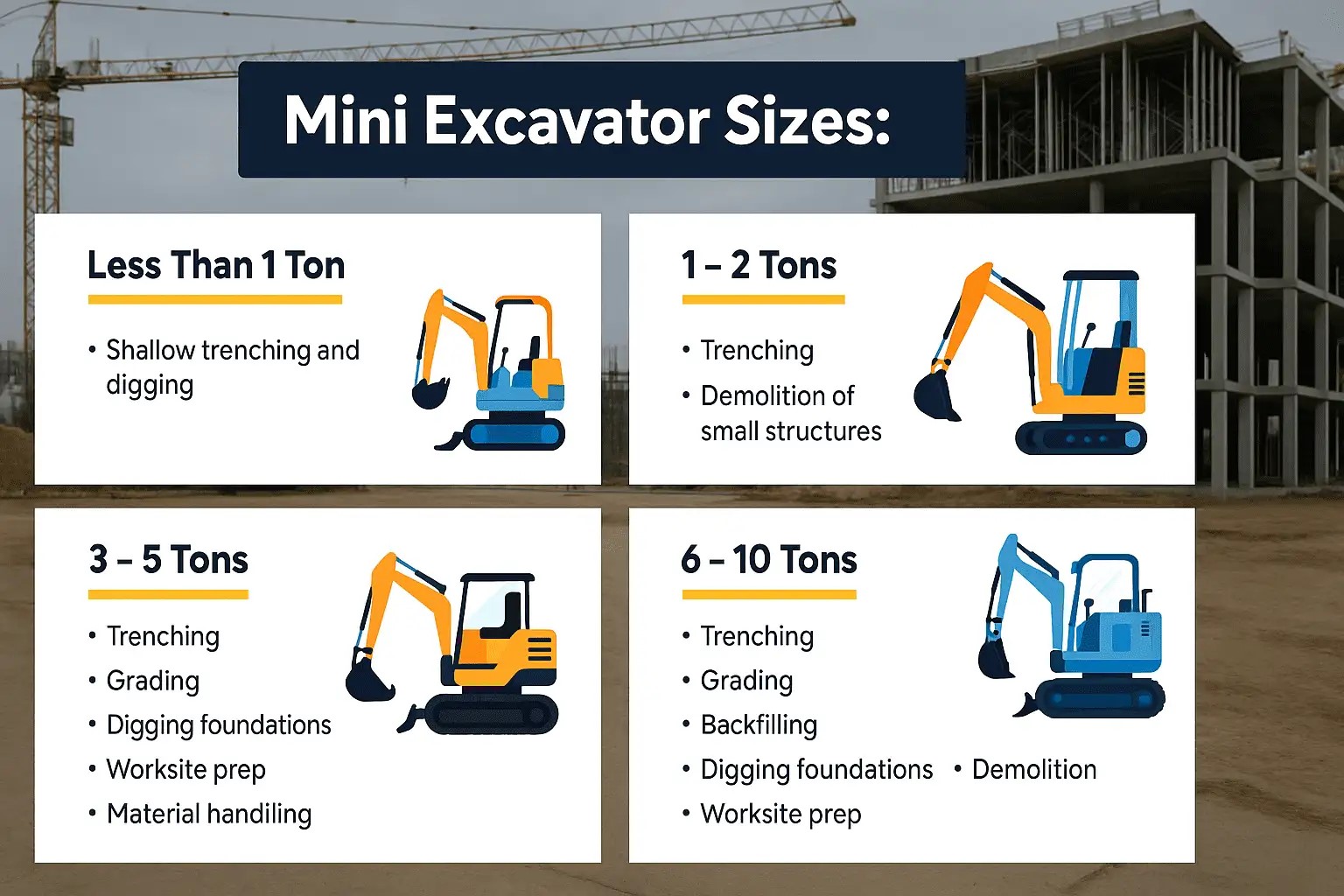Choosing the right mini excavator size can be the difference between a project running smoothly or facing costly delays. With so many models and capabilities available, it’s important to understand how to match the machine to the job. Whether you’re digging foundations, trenching utilities, or handling light demolition, selecting the right size helps maximize efficiency and save costs.
If you’re considering hiring one, exploring flexible mini excavator rental options is often the smartest choice for short and long-term projects.
Why Mini Excavator Size Matters
A mini excavator may look small compared to its full-sized counterpart, but choosing the right size is critical for:
- Digging capacity: Determines how deep and wide you can dig.
- Job efficiency: A machine too small struggles, while one too large may damage the site.
- Mobility and transport: Smaller excavators fit tighter spaces and are easier to move.
- Cost-effectiveness: The right match saves fuel, time, and money.
Selecting the correct excavator ensures your project runs on schedule and avoids unnecessary expenses.
Understanding Mini Excavator Sizes
Small Mini Excavators (1–2 tons)
- Best for landscaping, backyard projects, and trenching shallow utilities.
- Easy to transport and maneuver in tight spaces.
- Ideal for residential or DIY jobs.
Medium Mini Excavators (3–5 tons)
- Balanced size for small to mid-sized construction sites.
- Suitable for foundation digging, light demolition, and utility installation.
- Greater reach and lifting capacity without sacrificing mobility.
Large Mini Excavators (6–10 tons)
- Suited for commercial projects and deeper excavation.
- Can handle heavier loads and attachments.
- Require more space and heavier transport vehicles.
When deciding on the best mini excavator size, think about the scope of your project, terrain, and future needs.
Factors to Consider Before Choosing an Excavator
1. Project Scope
A small landscaping project doesn’t need a heavy machine. But if you’re preparing foundations or digging deeper trenches, a medium or larger excavator will save you hours of work.
2. Site Conditions
Tight or urban sites benefit from compact excavators with zero tail swing. For rough or sloped terrain, tracked excavators provide stability and power.
3. Digging Depth and Reach
Measure the required depth before selecting. Smaller machines average 5–7 feet, while mid-size excavators reach 10–12 feet.
4. Attachments
Buckets, augers, and breakers all place different demands on the machine. Ensure your selected size supports the attachments your project requires.
5. Transportation
If you need to move the excavator between sites, weight matters. Smaller sizes fit on lighter trailers, while larger machines require specialized transport.
For advice tailored to your specific job, our contact team can guide you toward the best option.
Mini Excavator Rental vs. Purchase
Buying heavy equipment is a significant investment. Renting offers clear benefits:
- Flexibility: Rent the right size for each job.
- Lower costs: Avoid high upfront purchase prices.
- Maintenance-free: No need to worry about servicing or repairs.
- Latest models: Access modern machines with better efficiency.
Many contractors prefer mini excavator rental services to stay adaptable without committing capital.
Comparing Mini Excavator Size to Other Equipment
Sometimes contractors wonder whether a skid steer or Bobcat might be a better fit. While Bobcats are excellent for lifting and moving materials, they cannot replace the digging depth and precision of a mini excavator. For any job requiring trenching, excavation, or demolition, choosing the right mini excavator size will deliver faster, cleaner results.
For more insights on how excavators compare to other machines, check our blog section where we cover practical equipment tips and guides.
Safety and Efficiency Tips
- Plan ahead: Match your machine size to the project before beginning.
- Check terrain: Ensure the excavator size suits your ground conditions.
- Use trained operators: Safe handling improves productivity.
- Switch attachments wisely: Use the right bucket or tool to avoid strain on the excavator.
The right preparation ensures both safety and efficiency throughout the job.
Making the Right Decision
If you’re still unsure what size excavator to choose, ask yourself:
- How deep and wide do I need to dig?
- Is the worksite tight or open?
- Will I need specialized attachments?
- How often will I use the machine?
Answering these will give you clarity. For professional guidance, our About Us page explains our experience in helping contractors choose the right machinery.
Conclusion
Selecting the right mini excavator size is about balancing digging capacity, mobility, and cost. Small excavators are perfect for residential jobs, while larger models serve commercial and heavy-duty projects. Instead of committing to one machine, opting for a mini excavator rental allows you to adjust size and power to each project’s needs.
Whether you’re a contractor or homeowner, choosing wisely ensures your project is completed on time, within budget, and with the right level of efficiency.

